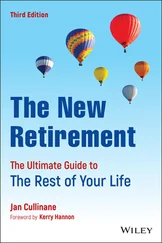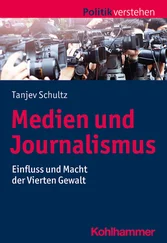The practice has something in common with the practice of selling pension assets: Employers prefer to keep it under wraps, lest it spark a backlash when employees find out the CEO with millions of dollars in supplemental executive pensions is also getting an extra helping from the rank-and-file pension plan.
To “minimize this problem” of employee relations, companies should draw up a memo describing the transfer of supplemental executive benefits to the pension plan and give it “only to employees who are eligible,” wrote a consulting actuary with Milliman Inc., a global benefits consulting firm. Covington & Burling, a Washington, D.C., law firm, advised employers to attach a list to the pension plan, identifying eligible executives by name, title, or Social Security number, along with the dollar amount each will receive. CenturyTel, People’s Energy Corp., and Niagara Mohawk Power Corp., a New York utility that’s part of London-based National Grid PLC, all used methods like this.
Initially, employers used these executive pension transfers as a way to use surplus pension assets, and some companies with overfunded pensions still do. To “take advantage of the Surplus Funds in the Pension Plan,” Florida real estate developer St. Joe Co. amended its employee pension plan in February 2011 to increase benefits for “certain designated executives.” These included departing president and CEO William Britton Greene, who was pushed out by a large shareholder. The amendment more than doubled the pension he’ll receive from the employee pension plan, boosting the lump sum amount from $365,722 to $797,349. Greene also received an exit package worth $7.8 million.
But moving executive pension obligations into the regular pension plans can not only use up the surplus assets, it can put a dent in the rest of the pension assets as well. Today, many pension plans with special executive carve-outs are underfunded, including Carpenter Technology Corp., Parker Hannifin, Illinois Tool Works (which manufactures industrial machinery), PMI Group (a mortgage insurer), ITC Holdings, and Johnson Controls.
When it comes to siphoning pension assets, nothing beats terminating the piggy bank and grabbing the entire surplus at once.
This maneuver was common. In the 1980s, employers terminated more than two thousand overfunded pension plans covering over two million participants and snatched surplus assets in excess of $20 billion. Some were inside jobs. Occidental Petroleum terminated its pension in 1983 and paid no income tax on the $400 million in surplus it captured because the company had net losses that year.
Other pension plans fell victim to pension raiders like financier Ronald Perelman, who took over Revlon in 1985, killed the pension plan, and nabbed more than $100 million in surplus pension assets, and Charles Hurwitz, who took over Pacific Lumber, closed down its pension and used $55 million in surplus pension assets to help pay off the debt he took on with the leveraged buyout. To stop these abuses, Congress slapped a 50 percent excise tax on “reversions” in 1990, and pension terminations at large companies slowed almost to a halt. But there was a huge loophole (there always is): A company that terminated its pension could avoid the onerous 50 percent excise tax—and pay only 20 percent—if it put one-quarter of the plan’s surplus into a “replacement plan.” A replacement plan could be another pension. Or it could be a 401(k). The only restriction was that companies allocate the surplus into employee accounts within seven years.
Montgomery Ward was a big beneficiary of this loophole. The stodgy retailer, struggling to compete with low-cost giants like Kmart and Wal-Mart, filed for bankruptcy protection in 1997. Its $1.1 billion pension plan was especially fat, because two years before its bankruptcy filing, Montgomery Ward cut the pension benefits by changing to a less generous plan. This reduced the obligations, and thus increased the surplus.
The company then terminated the pension plan and put 25 percent of the $270 million surplus into a replacement 401(k) plan. It paid the 20 percent excise tax, and the remaining $173 million of the surplus went to Ward income-tax-free, because the company had net operating losses. Ward used the money to pay creditors—the largest of which was the GE Capital unit of General Electric. It emerged from bankruptcy in 1999 as a wholly owned subsidiary of GE Capital, its largest shareholder.
The employees didn’t have much time to build up their 401(k) savings: The company went out of business in early 2001, closed its 250 stores, and laid off 37,000 employees. What about the 20 percent of surplus assets set aside to contribute to employee accounts? The $60 million or so that hadn’t yet been allocated to employee accounts went to creditors, not employees. Creditors have often ended up with the pension surplus. Around the time Montgomery Ward was fattening its plan for slaughter, Edison Brothers Stores, a St. Louis retailer whose chains included Harry’s Big & Tall Stores, entered Chapter 11. It killed the overfunded pension plan in 1997 and set up a 401(k). After paying the 20 percent excise tax, Edison Brothers forked more than $41 million in pension money over to creditors and emerged from bankruptcy. Its employees had even less time to build a nest egg in their new 401(k): The company liquidated in 1998.
These strategies ought to make it clear that many companies were terminating pension plans not because the pensions were underfunded or a costly burden, but because the pension plans were fat and the companies themselves were in financial trouble. The icing on the cake was that a company with losses would pay no income tax on the surplus assets.
It also puts a less savory spin on the origin story of the 401(k): Companies like Enron, Occidental Petroleum, Mercantile Stores, and Montgomery Ward didn’t adopt 401(k)s because they were modern savings plans employees were supposedly lusting after; their 401(k)s were merely the bastard stepchildren of dead pensions.
Lack of a pension surplus hasn’t stopped employers from raiding their pensions. Even if a plan has no fat, companies have been able to indirectly monetize the assets using the bankruptcy courts. Struggling in the wake of September 11, US Airways filed for Chapter 11 in 2003 and asked the bankruptcy court to let it terminate the pension plan covering seven thousand active and retired pilots. The airline estimated it would have to put $1.7 billion into the plan over the coming seven years, a burden that it said would force it to liquidate. David Siegel, US Airways’ chief executive, told employees in a telephone recording that the termination of the pilots’ plan was “the single most important hurdle for emerging from Chapter 11.” He said the move was regrettable but maintained that “the future of the airline is at stake.”
Few challenged the “terminate or liquidate” statement. Cheering the move were US Airways’ creditors, lenders, and shareholders with a stake in the reorganized company, because removing the pension plan would wipe out a liability and make the company more likely to emerge from Chapter 11 in a position to pay its debts and provide a return to its shareholders. Other cheerleaders were the Air Transportation Stabilization Board, which was poised to guarantee loans to the carrier, and the airline’s lead bankruptcy lender, Retirement Systems of Alabama, which stood to gain a large equity stake in US Airways when it emerged from Chapter 11. They accepted, without question or independent confirmation or research, the airline’s analysis and backed its request to kill the plan.
The pilots suspected that the airline was exaggerating the ill health of their pension to convince the court to let it pull the plug. Why the pilots’ plan, they wondered, and not the flight attendants’ plan or the mechanics’ plan? Had the airline deliberately starved their pension plan while funding the others? There was no way to tell, because the company didn’t turn over pension filings that included the critical liability and asset figures—not until the night before the bankruptcy hearing that would decide the pension’s fate. Without the information, the pilots couldn’t make their case that the liabilities were inflated.
Читать дальше












